Explore the Staten Island home of photographer Alice Austen
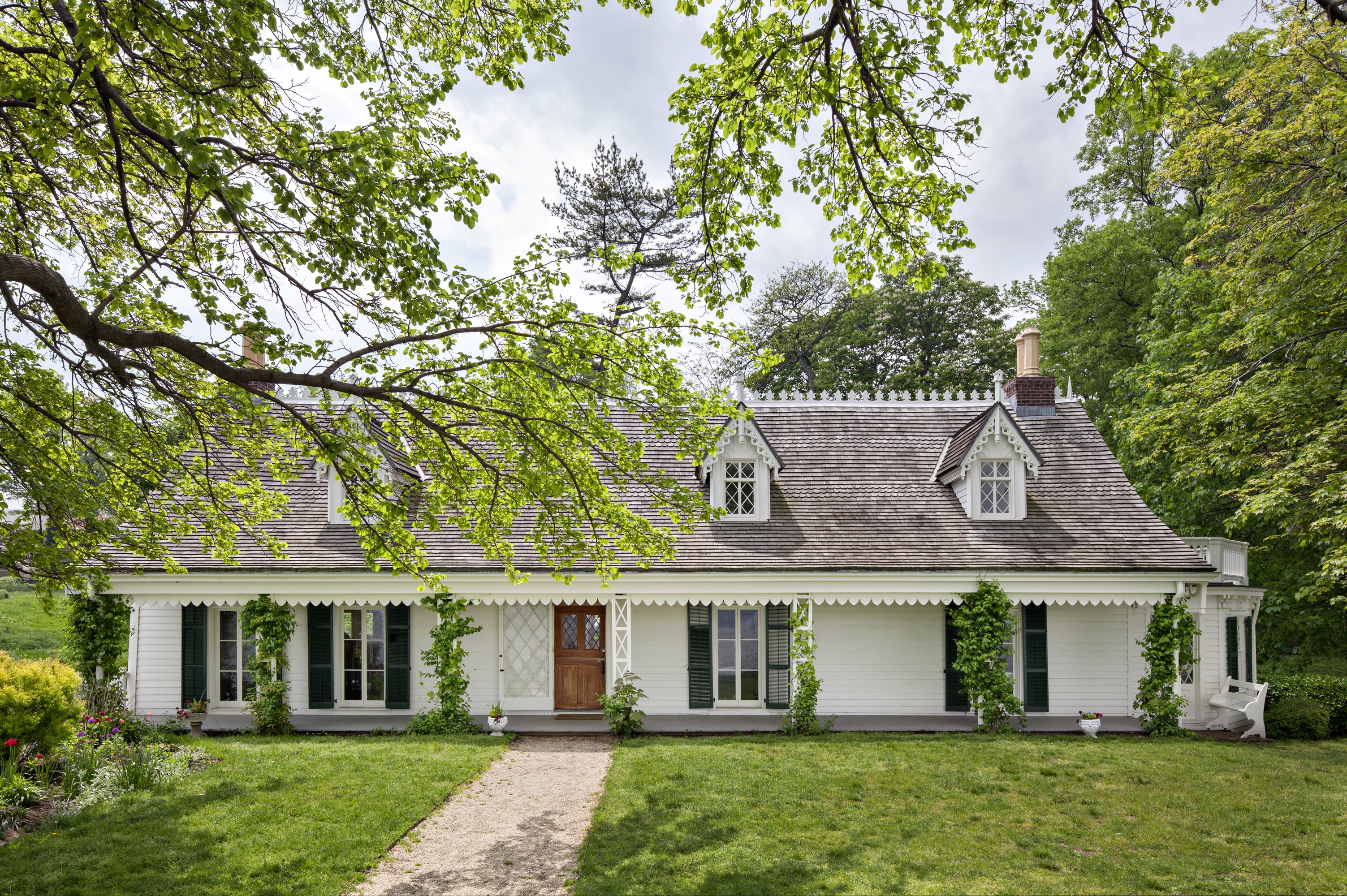
Apple | Spotify | Stitcher | Transcript | Email | YouTube | Bonus Episode
Listen to the 15-minute bonus episode for the Alice Austen House which takes recordings I couldn’t fit in like her contributions to the women’s bicycle movement, how her photos restored a ship in Australia, and trip up to Alice’s dark room. You can listen by joining Someone Lived Here’s Patreon.
In the first episode of the podcast Someone Lived Here (June 3rd), Kendra Gaylord brings you to the Alice Austen House on Staten Island. Alice Austen was a photographer who took beautiful personal photos of her friends. These photos include crossdressing and card games. She was also in a loving relationship with another woman, Gertrude Tate, for 50 years. Alice Austen lived from 1866 to 1952.
While walking through the home you learn Alice’s story and the events that led to poverty and how her work was found before her death.
Below are some photos of Alice and the property. If you would like to see some of the photos mentioned in the episode look through this collection curated by Victoria Munro.
If you are interested in visiting the Alice Austen House they are open Tuesday through Sunday. Go to the Alice Austen website for more details.
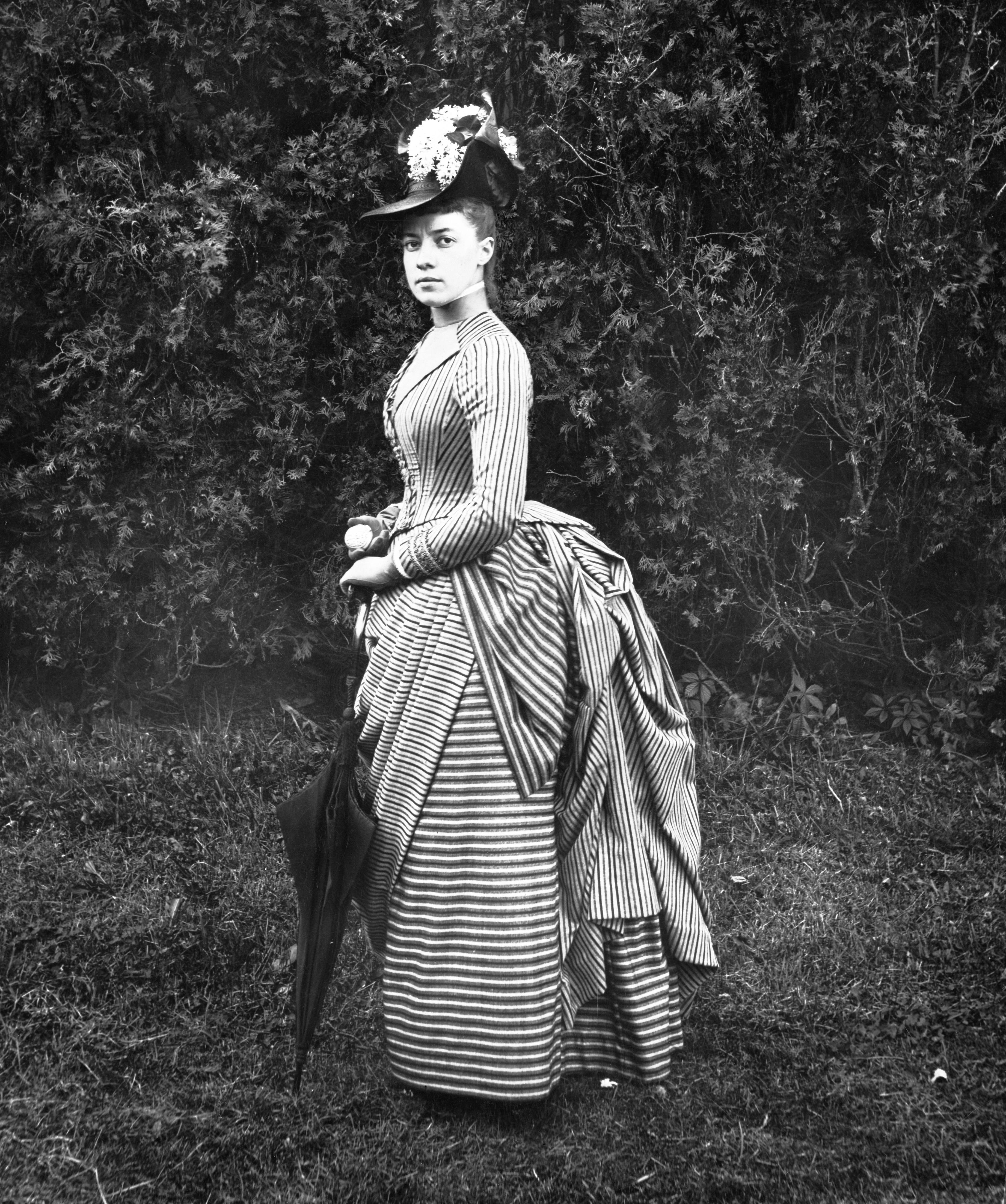
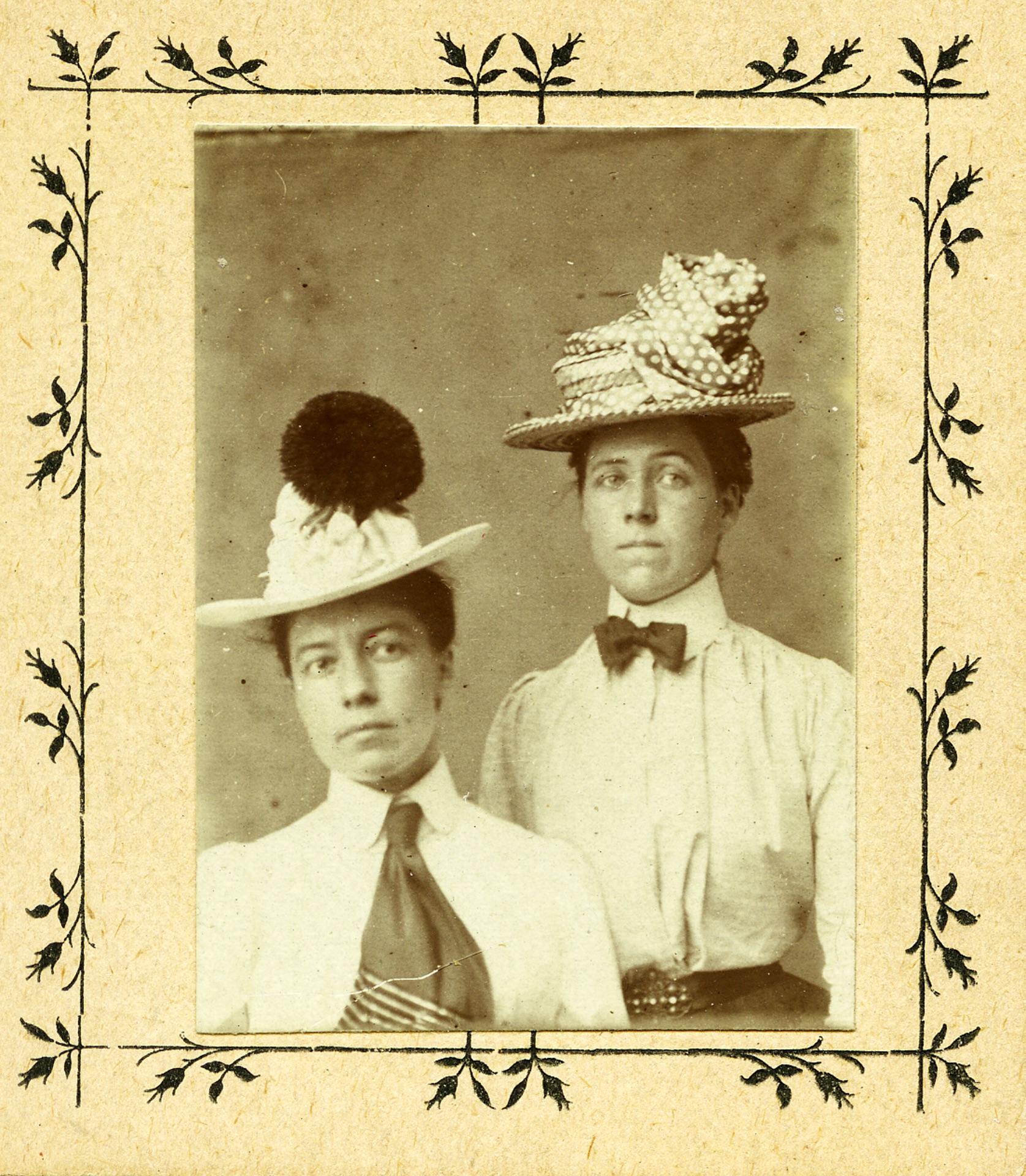
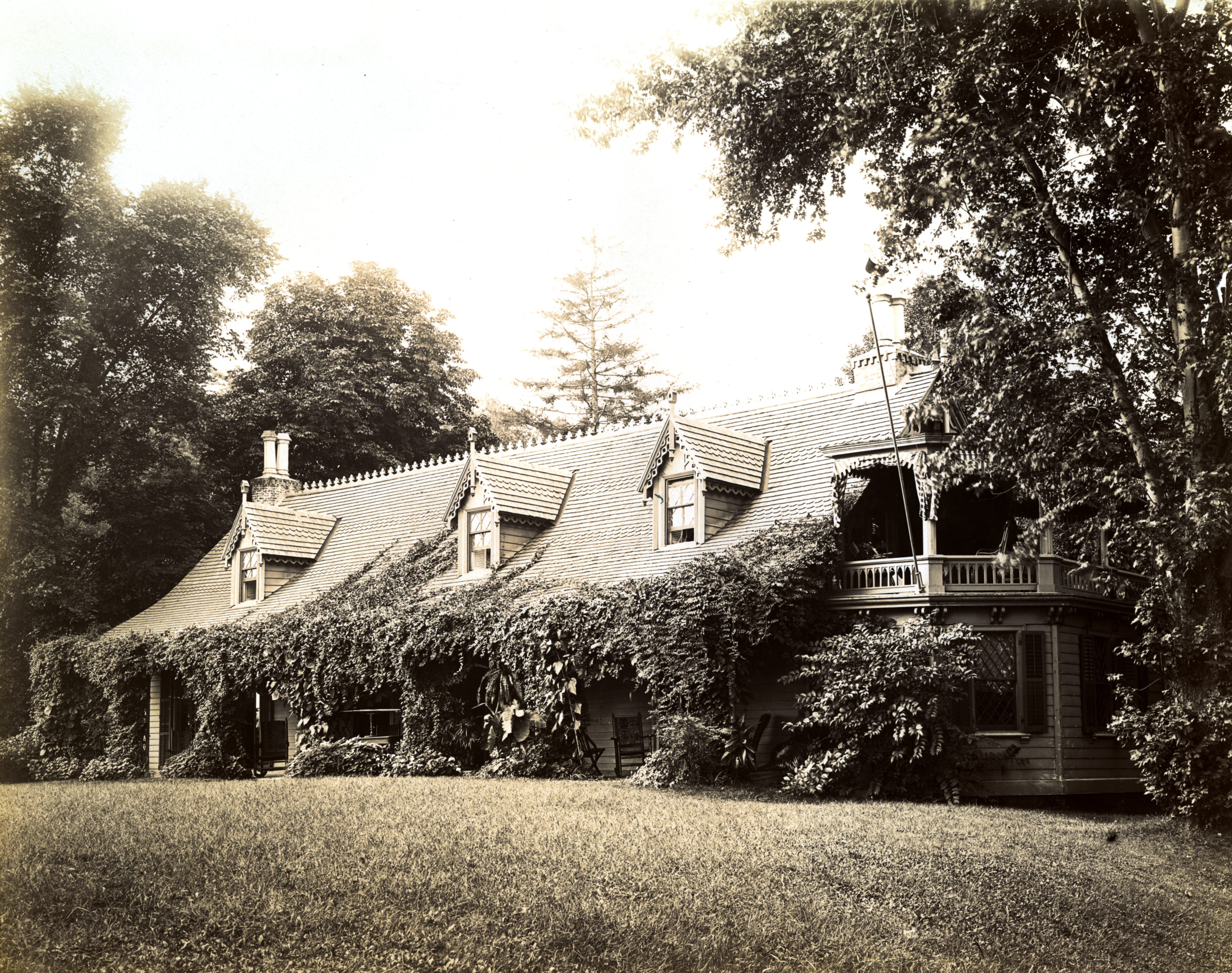
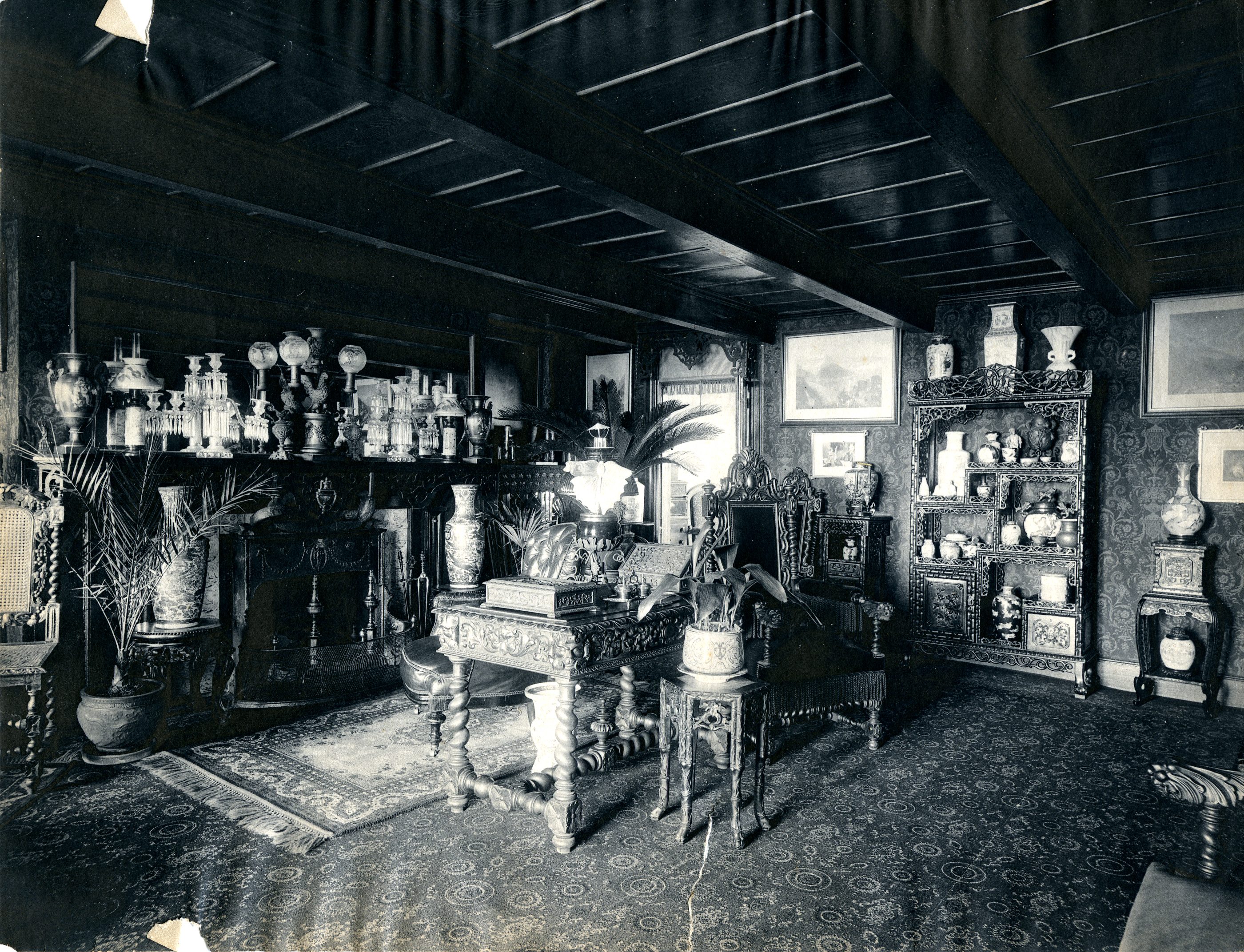
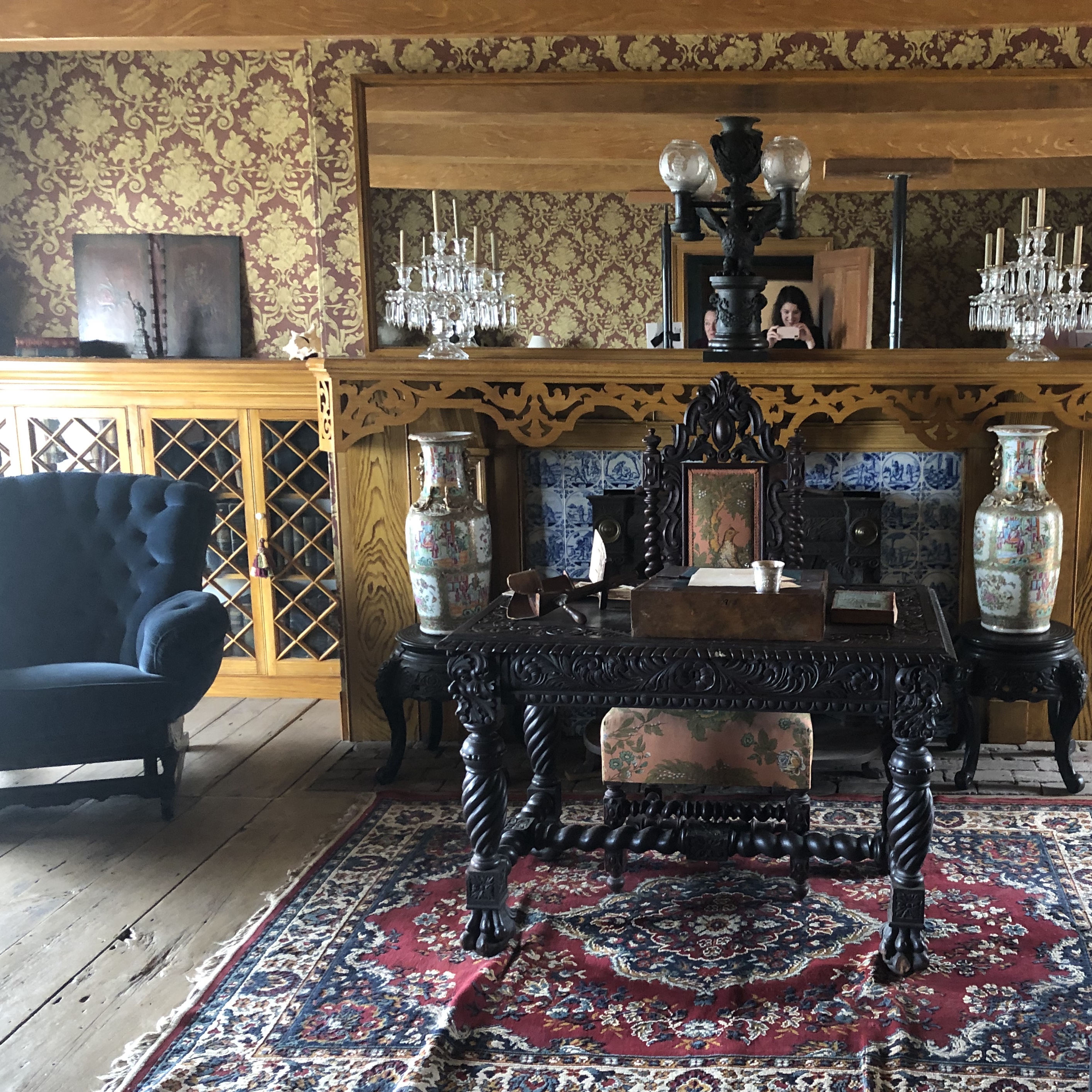
Music by Tim Cahill. Icon artwork by Ben Kirk. Transcription by Sam Fishkind.
YouTube Video of Alice Austen podcast episode with captions and imagery
Below is a transcript for the first episode of Someone Lived Here at the Alice Austen House on Staten Island. If you have any questions about the show or suggestions on how to make it more accessible please reach out at someonelivedhere@gmail.com.
Transcript by Sam Fishkind
Kendra Gaylord: Today we’re at the Alice Austen House. This is a very old house, but the life lived within it feels very modern. Alice was a photographer, and lived in a loving relationship with another woman for most of her life. The photos she took with her friends are unlike anything I’ve ever seen from the time. It is amazing that we’re able to walk through the home and see her photos, since both were nearly lost almost a century ago. Welcome to Someone Lived Here, a podcast about the places cool people called home. I’m your host, Kendra Gaylord. Every week we’ll be bringing you to a cool old house in New York State. Today we’re at 2 Highland Boulevard, Staten Island. The Alice Austen house is a small white house that overlooks the Narrows; the body of water that connects the Hudson River and the Atlantic Ocean. The house is nestled into a green grassy hill. It looks like it’s one story, but it’s actually two. The Dormer windows on the roof have diamond window panes and gingerbread trim, a popular accent in the 1830s. The columns on the first floor have plants growing up them, so that you barely notice there’s a first floor. The most impressive part of this house is it looks almost exactly like the photos Alice took of it in the 19th century, but this home was in disrepair and on the brink of demolition in the 1960s. To help understand the story of Alice Austen and her home I spoke with Victoria Monroe. She is the Executive Director of the Alice Austen House and an expert in the story of Alice.
Victoria Monroe: She was born in 1866; so she was a Victorian era woman. And we know that when she was born, she obviously, she wasn’t living in this house. She was living close by, with her mother here in Staten Island. And we know that her father abandoned her mother at some point, either during the pregnancy or very, very early in Alice’s infancy, because she was christened up the road at St. John’s Church and his name is not listed in the book. So her mother, then as a single woman, was really put in a position where she had to move back here with her parents and what this house is known as by the family is called “Clear Comfort”. And what’s really interesting about that was that Alice moved in and was the only child surrounded by adults. Her mother was living here, of course, her grandparents lived here and her Aunt Min and Uncle Oswald. She also had an Uncle Peter that was the closest in age to her. So, we know from various stories and from scholarly research that Alice was very doted upon and she was allowed to really pursue all of her interests that stretched beyond what was the norms for a young Victorian woman. She receives a camera at age 10; or around 10-11 years old. It’s a small wooden box, somewhat cumbersome, that her Uncle Oswald brings back from one of his seafaring journeys. He was a ship’s captain, and when he left the house again, at that point, he had taught her how to use the camera. And he left it in her hands and her Uncle Peter was a chemist, and saw her potential and encouraged her, and helped her with some of her chemical processes. And eventually Oswald and Peter set her up a darkroom in a cupboard here at Clear Comfort. We still have that upstairs cupboard today. There was never any running water in the darkroom, so it was a very simple set up, but by the time Alice was around about 18 years old, she was very accomplished in her photographic technical skills. And she went on throughout her 20s, 30s and 40s to take around about 8,000 images of a wildly changing New York. So, she was a socialite, wealthy, white, privileged woman, and she never married. She never had any children. And she spent the majority of her life in a loving relationship with another woman, Gertrude Tate – 53 years they were together. And so she was sort of free from some of the constraints, a lot of the constraints obviously that other woman experienced and in her era and quite frankly experience today.
Kendra Gaylord: And being free from those constraints meant that Alice Austen could explore things that a lot of other women couldn’t at the time. Alice would take up to 50 pounds of photographic equipment with her into Manhattan.
Victoria Monroe: And she photographed immigrants at work on the streets of New York, and she was actually engaged to take photographs of the quarantine facilities in the 1890s on Hoffman and Swinburne Islands in New York.
Kendra Gaylord: Hoffman and Swinburne islands were two man-made islands that were used at the turn of the century as a Cholera quarantine. The islands still exist, but they’re mostly just ruins, and a place that harbor seals hang out. Alice wasn’t just taking photos of quarantines. She also took photos of her social circles. And these don’t look like a lot of photos that you see from the 1890s. She called them the “Larkey Life”.
Victoria Monroe: The majority of these photographs that I think that we’re really talking about, the parties, the dress-ups, costumes, cross-dressing, lots of irreverent photographs and very funny photographs actually were taken mostly in the 1890’s. So this is before Alice met Gertrude in 1899 and she really had been having a real lark, so she photographed her friends, not just here on Staten Island, but also on vacation as well, and in other locations. Some of them are just truly very beautiful photographs of both male friends and woman friends relaxing in nature. And that’s why I say it’s a very intimate portrait of people relaxing at that time. There’s this beautiful photograph of a young man dipping his head in the stream to cool off. But some of her, more challenging, fun photographs certainly will be on display and they hadn’t been previously in the house. Most of them do belong to the Collection of the Staten Island Historical Society. But they are…there’s a fantastic photograph, called “‘Trude and I in Short Skirts”. And she is with her friend Trude Eckelston.
Kendra Gaylord: This is not the Gertrude who would later become Alice’s lifelong partner. Turns out Gertrude was a very popular name at the time.
Victoria Monroe: So it’s taken an 1891, and they have posed themselves in their petticoats with masks, like; little masquerade masks and their hair down, and fake cigarettes and their mouths. And it’s actually taken in the Rectory of St. John’s church. [Laughing] It’s so beautifully composed. It’s so Alice Austen, she had such an eye, and it’s…she has a very particular style with her compositions. And so the photographs the two women are symmetrically posed and facing each other. And Alice often used shutter release cables.
Kendra Gaylord: Shutter release cables are long steel cables that trip the shutter mechanically. This can help reduce camera shake, but also allowed Alice to take photos of herself. She was a real pro at hiding these cables within her frame. One of my favorite self-portraits is Alice sitting at the water hand pump, rinsing her freshly developed photographs. And from what I can see, there’s not a cable in sight.
Victoria Monroe: Gertrude moved into Clear Comfort here at house. Gertrude was Alice Austen’s partner who we would potentially refer to them as being in a lesbian relationship. Now of course they would’ve never called themselves that. Gertrude moved in in 1917, and Alice and Gertrude had actually been together since 1899. And they led a incredibly wonderful lifestyle here, and traveled to Europe most years. But unfortunately lost all…most of the money that Alice had in the stock market crash of 1929.
Kendra Gaylord: [For those trying to keep track of time, this would mean Alice was in her sixties.]
Victoria Monroe: They tried various things to stay here and maintain the home. Obviously selling off many of Alice’s possessions, which have been many have been lost to time.; because of that. They tried to run a tea room here, which did not provide enough funds to support them. And eventually they were forced to leave the home and sell off nearly all of Alice’s possessions. Alice called a friend, a contact at the Staten Island Historic Society, and they came and rescued about 3000 of her glass plate negatives, and those glass plate negatives went into a basement cellar at Historic Richmond Town.
Kendra Gaylord: But the story of Alice’s photographs doesn’t end in the cellar. There’s a lot more to tell, but before we get there, we’re going to take a tour of the house. When you first walk into the home, on the left is a formal parlor. It’s one of the two period rooms in the house today. This room is very Victorian and pretty dark. Before I spoke with Amy O’Hara, the Director of Operations here, she opened the shutters, which lets in a lot of light and shows off the waterfront views.
Amy O’Hara: This is a place where they would have, you know, relaxed and read and sometimes have guests in it. It is one of the two period rooms that we have at the Alice Austen House, and it is decorated with a bunch of different furniture, some of which belonged to Alice and her family, some of which did not.
Kendra Gaylord: As Victoria mentioned earlier, nearly everything Alice Austen owned was sold. But there are a few things that belonged to the family.
Amy O’Hara: What you would see if you came into this room is we have these two ornate urns that were part of the collection of Alice’s family, likely that they came from her Uncle Oswald and Aunt Min; Aunt Min was her mother’s sister. Oswald was her husband. He was a Danish ship captain. And so she traveled a lot with him and they brought back a lot of artifacts and things from their travels. You also see this gorgeous gas lamp that was presented to Alice’s grandfather. It has a beautiful eagle on it and some very ornate designs. And then you see a chair that is one of the chairs; that if you look at pictures, of which we have many, of the original parlor from Alice’s time, you will see the chair. This is a chair that has been recovered since Alice time and actually belongs to the MET. So we actually have it on loan from the MET.
Kendra Gaylord: But there’s one thing that doesn’t fit in with the traditional parlor furniture. And that’s a thick metal chain. This iron chain was made by Alice’s great, great, great grandfather.
Amy O’Hara: So he was owner of a thing called the Sterling Iron Works and they were responsible for building a 1500-foot, 3-ton chain that got strung across the Hudson River to prevent British ships from coming into New York and getting West Point during the revolutionary war.
Kendra Gaylord: Wow.
Amy O’Hara: And so that is a replica. Alice’s family did have the original chain. It got sold, and we don’t know who it got sold to.
Kendra Gaylord: So if anyone has a chain around here [laughs] –
Amy O’Hara: A gigantic chain that has huge, heavy links…let us know. [chuckles]
Kendra Gaylord: So now we’re in the front entryway and it’s got a bit of a ghost story. I asked Victoria to tell me more about it. It turns out Alice Austen thought it was haunted, too. I’ll let Victoria take it from here, but the only thing you should know is this house was thought of as a “hangout spot” for Revolutionary War soldiers.
Victoria Monroe: The story is about an unsuccessful courtship. And they say that he hanged himself in the entryway to the Alice Austen House. And Alice always said that she felt like there was a ghost in the house, but I have a much better ghost story.
Kendra Gaylord: Oh, I’d love to hear it! [laughs]
New Speaker: And believe it or not, you know, I’ve been here for five years and I hadn’t heard it until this past Halloween season.
Kendra Gaylord: So this story was originally told by the current caretaker of the property.
Victoria Monroe: When he was, had been interviewed to come and be the caretaker of the house, the person had told him that he needed to talk to Alice. Let her know that he was acknowledging her, and he kind of was like, “whatever, I don’t -I’m not going to do that”. And so his first night here, he’s in bed and he hears a crash. And he goes downstairs and one of the photographs has fallen from the wall and there’s glass on the floor and he just goes ahead and cleans it up. And he goes back upstairs and an hour later, another crash; another photograph, and this happens three times. And finally he talks to Alice and he’s never had a bad experience since or felt anything in the house. The caretaker before him on their first night here; they were a couple, but, and this was told to me by a former Executive Director Mitchell Grubler in the 90’s: he said that they work to a mist; a fog, in the room and no windows were open. No doors were open. So there’s definitely these stories that are there and I know people love them. But I love Paul’s story the most; that Alice would, you know, take these photographs from the walls and smash it until she got her away. Because from all accounts, that’s just the kind of person she was.
Kendra Gaylord: This seems like as good of a time as any to introduce ourselves. Hi Alice, Austen. We’re doing a podcast about you because you’re really cool. If you want to break anything, feel free, ideally not the audio equipment. Just give us a heads up. So from this entryway you can access the middle parlor, which is where most of the everyday hanging out would have happened. There are still two original closets, and this room now acts as an exhibit space for contemporary work. The second contemporary gallery is Alice’s bedroom.
Amy O’Hara: Alice shared this room on the first floor with her mother. And so they built this side porch, you know, that we use as our study now to give them more space. And it’s a spectacular room that is all surrounded in windows, and is where we house our library. So this was Alice’s bedroom; off of this room you also find the bathroom, which was the first was added in 1900, and it is the first time that there was water in the house. Imagine that; living here from 1866 to 1900 with no water.
Kendra Gaylord: That’s actually going to be a common theme in these episodes of places that didn’t have toilets. Before we finish the tour, I follow Amy to close the shutters that she kindly opened for me. That also means we get to test out the old Dutch door again.
Kendra Gaylord: Do I just close this?
Amy O’Hara: Oh, yeah, yeah, you can. Yeah.
Sound Effect: [Creaking and straining sounds]
Kendra Gaylord: This is not my talent.
Amy O’Hara: It doesn’t – yeah, it doesn’t shut; exactly. Yeah.
Kendra Gaylord: Okay. Well, I tried. Now that I’ve really shown off how hard a door can be to close, I just want to tell you a little bit what it looks like. When you look at photos of the Alice Austen House from the past or the present, there is a very noticeable plant climbing up the columns. It’s wisteria, and the caretaker has to work hard to keep it from creeping up the whole house.
Amy O’Hara: I mean as much of a pain as it can be, it also gives, it’s also just so beautiful to see it when it’s in the summertime. And we have incredible gardens here; you know, that’s one of the things that is so special about this place. You know, Alice is one of the founding, you know; the founders of the Staten Island Garden Club, and they still come and have meetings and they still come and do volunteer work. So it’s a really beautiful continuity here within this community.
Sound Effect: [Keys jingling, wood creaking]
Kendra Gaylord: Amy’s closing up the shutters now, so we’re going to head back upstairs and continue our chat with Victoria. She’s going to help us understand what happened at Alice after she lost her wealth.
Victoria Monroe: So like I said, in 1945, Alice and Gertrude had been like trying to keep some kind of…almost a tenancy in the house. They’d lost the house, couldn’t keep up with a mortgage. They were paying a rental fee of about $10 a month, and you know, eventually were evicted from the home. At that time, they tried to take on a small apartment, but Alice’s health was failing. She was older by this stage and actually relatively crippled by arthritis, and Gertrude was struggling to care for Alice – and she was not an easy patient, apparently. And she sort of got bumped around several nursing homes, and eventually they couldn’t afford that, and Gertrude needed to move back with her family in Brooklyn. And Alice signed a pauper’s note that she had less than $20 to her name, and was moved into the Staten Island farm colony, or the Staten Island Poorhouse, it was known. So Alice and Gertrude finally get separated, really by finances it’s ill health as well, but finances, and Gertrude still makes the trip to Staten Island once a week.
Kendra Gaylord: At this point, Alice Austen was not known beyond her neighbors in Staten Island. That’s where Oliver Jensen comes in.
Victoria Monroe: There was a man named Oliver Jensen. He was researching to produce a book called “The Revolt of the American Woman”. And he was looking for interesting photographs of woman and he was reaching out, very smartly to various historical societies. And so he was alerted that there was the set of slides at historic Richmond town. And when he went to look at them, they were being kept in a very dank sort of cellar basement in one of the old buildings there. And there was really no good lighting or anything. And he started to look at them, and realize that they were very interesting, and brought down lighting and realized it was the work – it needed to have been the work of a woman photographer – Alice always signed her photographs and plates “EAA”. After the discovery of these photographs, it was sort of a number of weeks, I believe, Oliver Jensen was at a meeting of the Historic Society. And he said, “just imagine if Alice Austen was alive today”. And they said, “well, she is, she’s in the poorhouse”. So he went and he got some of her photographs blown up; enlarged. And he took them with him to visit Alice at the farm colony. And he discovered her sort of at the end of a long hallway that was rows of beds with relatively naked bulbs, a pretty…really smelling of disinfectant: not a happy place at all. And Alice was relatively unresponsive. She was sitting in a wheelchair, and it wasn’t until he started showing her these images and she said, “oh, that’s Trudy. And that’s…” You know, spotting her friends in the images. And then she said to him, apparently, “well, these aren’t my photographs though. I never printed like that, you know”. So he was able to engage her and then look more at the collection and he sold a number of her photographs to various publications that raised enough money to get her out of the poorhouse and into, a nursing home. Now, he also had her photographs; they were published, then, and the particular publication that really celebrates her work in 1951, this was the year that he discovered her work, is Life Magazine. So they did a whole like full spread of Alice’s photographs and talked about her, and they brought Alice here; back to her home, and Alfred Eisenstaedt photographed her. And this was when Alice took her last photograph. She took the camera from him and photographed him. It’s a happy, sad story. The house was completely dilapidated; all of its beautiful trims missing. Alice found very sad to come back here and, and see it like that. But they also then created a[n] Alice Austen Day, which was in celebrated over at the Historic Richmond Town for Alice.
Kendra Gaylord: In the October 29th, 1951 issue of Life Magazine. Alice Austen Day was covered. Many of Alice’s friends were in attendance as well as Gertrude Tate. There’s a photo on the last page with the caption, “Highly Pleased Alice Austen beams up at Gertrude Tate”.
Victoria Monroe: The following year in 1952, Alice passed away. But she had seen her work in print. Alice didn’t even have a tombstone by the way, so there was no headstone. She was buried in the family plot, which is in the Moravian Cemetery on Staten Island, but there was no money for a stone. So it was the friends of Alice Austen that gathered together the money and finally gave Alice a stone. But to add to that story, and it’s maybe a note to finish on, Gertrude and Alice’ final resting wishes were to be buried together in the Austen family plot. When Gertrude lived 10 years longer than Alice, when she passed away, those wishes were denied by Gertrude’s family who had always believed that it was the wrong kind of devotion. So Gertrude is buried in Brooklyn, and Alice is here on Staten Island, and that’s an incredibly sad story. There’s a movement of people that would like to see them reunited.
Kendra Gaylord: I like to think if Alice Austen is still at 2 Highland Boulevard, breaking glass frames, that Gertrude Tate is right there by her side. The Friends of the Alice Austen House began in the 1960s and were able to achieve landmark status for the grounds; which stopped the home from being demolished. Restoration of the home began in the 80s. Because of Alice’s extensive photography, they knew what the home looked like inside and out. In 2017, the home was designated as a site of LGBTQ history. The Friends of Alice Austen operate the House and garden as a historic house museum, and continue the restoration. The home is open to the public Tuesday through Sunday, and I would highly recommend you see it for yourself. Thank you for listening to this episode of Someone Lived Here. I’m your host, Kendra Gaylord. Be sure to subscribe so you can be the first to hear next week’s episode on Lewis Latimer. He was an African American inventor and he played a huge role in the invention of the telephone and the light bulb. Next Monday, we’ll be at his house in Queens. Thank you to Amy O’Hara, Victoria Monroe, and the entire staff at the Alice Austen House. Music is by Tim Cahill and podcast artwork by Ben Kirk. To learn more about the show. Go to someonelivedhere.com and follow us on Instagram.